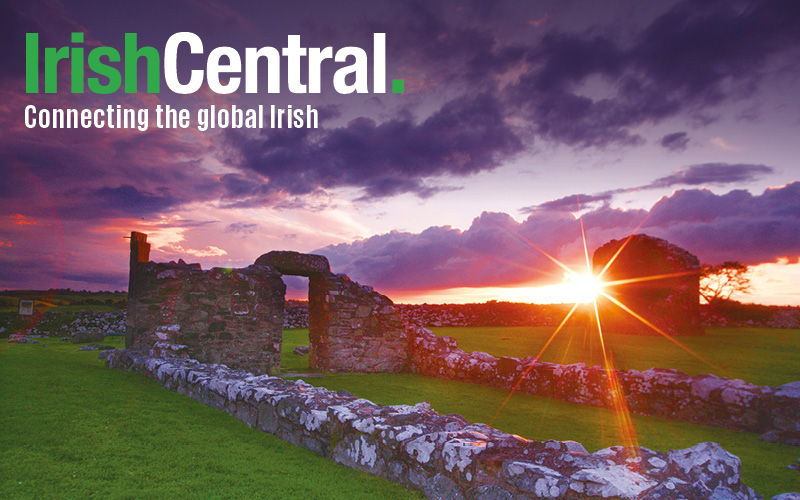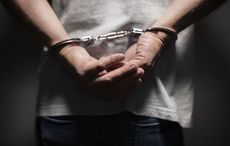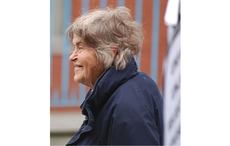In an interview for IrishCentral.com, Sinead O'Connor has revealed she actually has a deep affection for the Catholic religion, despite seeing many flaws.
When she was growing up in the 1970s, she says, “Ireland was a very religious place; it was a theocracy in fact. I was a lucky person in that I never sponged up anything but the good of Catholicism.”
“I think there is a lot about Catholicism which is absolutely beautiful. I think the essence of Catholicism is beautiful."
So speaks O’Connor, often imagined to be hostile to the Catholic tradition. In fact, she holds a deep affection for the faith.
The stark, ethereal beauty of her voice first enchanted the world in the late 1980s. Yet she became a hate-figure for many American Catholics in 1992 when she tore up a picture of Pope John Paul II on Saturday Night Live. In a dramatic gesture, she threw the pieces of the picture at the camera, saying, “fight the real enemy.” She was widely vilified at the time: her albums were ceremonially crushed by bulldozers, and she was booed off the stage in Madison Square Garden.
What then seemed like outrageous claims of a widespread Church cover-up of child abuse have now been borne out as fact by a litany of reports from around the world. A contrite Facebook group, “apologise to Sinéad O’Connor NOW” has even been set up by some who once dismissed her.
She has been a world-famous singer since her early 20s, but the 43-year-old Dubliner has now become a prominent and increasingly respected voice on the child abuse issue. She has recently appeared on BBC’s “Newsnight”, CNN’s “Larry King Live” and last March wrote an op-ed in The Washington Post, where she said that the Pope’s recent pastoral letter to the Catholics of Ireland was “an insult not only to our intelligence, but to our faith and to our country.” She has called on ordinary Irish Catholics to boycott Mass until the Vatican confesses to the cover-up of child abuse.
Sinéad O’Connor’s father was an attorney. That little-known fact seems somehow significant when you speak to her about the abuse crisis. She must have inherited some of his lawyerly genes: she has studied multiple reports on the issue in forensic detail, and has an encyclopedic knowledge of them:
“The fact is that there are five reports: Boston, Philadelphia, Ryan, Ferns and Murphy; and each of those reports independently of each other have come to the same conclusion: that there was a cover-up. And when you look at how exactly they went about covering up, each diocese behaved in exactly the same way. Now if it hadn’t been ordered by ‘central command,’ there would be differences in how each arch-diocese had handled things. “
Speaking to from her home near Dublin, she breaks off occasionally to comfort her kids, to arrange their lifts to swimming practice; taking care of a million small things, like any busy mother-of-four. She remains very active as a musician, but says her primary occupation is not singer, songwriter or campaigner, but mother. She has recently seemed more comfortable in her own skin than ever before. After becoming suicidal in her early thirties, she was belatedly diagnosed with bipolar disorder. The treatments worked, and she recovered her happiness and her creativity.
She is clear in what she feels is necessary to restore credibility to the Catholic Church: “any living clergy who were directly or indirectly involved in the cover-up… should be fired… I think it looks very bad that they haven’t been fired… I often wonder, if it was their own nieces or nephews, what would they have done?”
She says, “I think it’s unfortunate that most Catholic people have not read the reports, I think they should be mandatory reading for any Catholic person over the age of 18.” Yet she also says that, “the love and curiosity I have about religion come from Catholicism. I am very interested in the idea of the Saints; everything about it; I mean, it’s beautiful.”
She says one of her favorite Saints is Joan of Arc: “how you get to be a saint is you speak out against the church, they murder you, and then a century later they make you a saint.”
She has fond memories of doing gigs in the United States: “I love everything about America, especially nowadays, because Americans have taken on the child abuse cause so strongly. Everything does what it says on the tin in America. When America starts something it will get it done…If you’ve got The New York Times digging away on something, they’re not going to let go of it, they’re like dog with a bone.
I’m connected with a lot of the abuse survivors here and they are just jumping around with delight at what the American media are doing. There is a big vote of thanks due to the American media.”
She knows Ireland’s Catholic institutions from the inside: as a troubled 15-year-old girl she was committed to the Grianán Training Centre for shoplifting and truancy. This was one of the now infamous Magdalene Laundries. She recalls:
“I wasn’t treated badly in there…[but] I grew up in a very abusive household, where I was abused very severely by my mother. So the whole idea of child abuse is something that I would identify strongly with.”
She says that the only really horrific thing that she experienced in the laundry was when, “a friend of mine had a baby; she was 17 or so. We all looked after her during the pregnancy, we were all really excited, and the baby was born, a beautiful boy. I always remember him, so white, with black, black hair; a really lovely baby. When she came back with the baby, she was thrilled. She had the cubicle next to mine, and she would poke her head over the top in the morning and would talk about all the plans she had for herself and her son. And then one morning we woke up to hear her screaming. What had happened was, without any warning, the nuns had come to take her baby. They literally tore the baby out of her arms. She was screaming and begging, all the rest of us were screaming and begging, I’ll never forget the screams of the woman. And they literally pulled the child out of her arms, and that was that. She never heard anything more about where the child went, what happened, nothing.”
Yet she also recalls that one of the nuns in the Grianán centre gave the teenage Sinead O’Connor her first guitar.
Speaking of the traditional image of the Holy Spirit as a dove, she says “I was very struck by that as a small child… It used to disturb me when my father would bring me to Mass when I was small, as I used to see these priests … and how miserable they were. They weren’t taking any joy in the Mass or any joy in their belief in God. And then they would unlock the tabernacle and take out ‘the bird’, it would be dished out and then they would lock it back up again in the tabernacle. As a small kid, I used to actually feel that I couldn’t breathe, because they were locking up the Holy Spirit.”
She says, “I never had any bad experiences with the clergy… My feeling about ordinary priests and nuns is that they’re great. I’ve never met anything but loving priests and nuns. I’ve been communicating with quite a lot of them lately, and they themselves are very upset about how they have been brought in to disrepute by the behavior of the hierarchy. The poor priests are afraid to walk down the road with a child. It’s appalling.”
In 1999, Sinéad O’Connor was ordained Mother Mary Bernadette by the Latin Tridentine Church, a breakaway Catholic church. She says, “It’s something I regret ever talking about ….To me [becoming a priest] was a Holy Spirit request, and that’s all I would say about it. I’d be far more wary about disobeying the Holy Spirit than I would be about disobeying the Vatican.” She feels that she is fulfilling her call to ministry through her music: for example, her 2007 album “Theology” was inspired by the Psalms and other scripture.
She says, “To me, God and religion are two different things. What is the difference? Religion loves conditionally and God loves unconditionally… To me, the Holy Spirit, it’s supposed to be a bird, it’s supposed to be free to fly and land wherever it chooses, so who has the right to say, ‘well, it can’t land on you’?. To me, it seems that an awful lot of religions are actually holding God hostage….
“I do think that, to an extent, if women had been more involved in the organization, [the abuse scandal] might not have happened. Do you remember when John Paul II was close to death and he had just had a tracheotomy? I always remember seeing him on TV…in the window of St Peter’s one day doing his blessings, and he had this tube in his throat. Apparently he was having a problem with the tube and he started to fiddle with it. And instead of a person coming to help him, what actually happened is just unbelievable, and it says an awful lot about the organization: a long stick was poked toward him and the stick poked the tube back in to place. Now if women had been there, a woman would have put her arm around him and said ‘are you all right?’
We are all human, I am a human being and if I see an old man suffering I feel bad about that” but “we are coming to a time in the early 21st century when it is going to become very obvious to people that God and religion are two very different things. It’s not that you get rid of religion, because we all like to have somewhere to go to light a candle, and we all like our rituals, but we need to understand that God and religion are two very separate things..”
She is fascinated by near death experiences, noting that many people return with a new impression of the divine: “most were aware of what they can only describe as a superior being, or an intellect. It wasn’t a man or a woman. It was an energy or an intellect that was pure love.”
She says: “For me, being pregnant or having children: that to me is the greatest time when you feel connected to God. It’s when your child is in your womb, and somehow you made it, and God is forming it.
She recalls, “About 10 years ago I went to confession. Because I grew up in abusive circumstances, I had absolutely no self-esteem, so I spent about 10 minutes telling the priest what a terrible, awful person I was, and he stopped me in mid flow: ‘stop it!’ he said, ‘this is blasphemy: God has made you exactly the way you are and it’s a blasphemy for you to criticize yourself and to say that you are a bad person’… I thought that was a very powerful thing to say.”
But she says, “I don’t think all the dogma and the rules and regulations represent true Catholicism. I think the attitude to homosexuality is anti-Christian, and you could argue also blasphemous, since God made gay people.”
Of the crisis in the Catholic Church she says: “Well, it’s a bit like a boil being lanced. I think that there has been a lot of darkness going on behind the scenes, and its now all spilling out. The boil is being lanced, and after that the pus will leave, there will be a healing then, there may be a scar for some time. But over the years, that will fade away.
“I think that what’s happening spiritually is that the Holy Spirit is doing some serious housekeeping. And that means throwing out a lot of stuff, and that’s painful for all of us; probably especially for those who are being revealed as criminals. But that is necessary work. So I think that it’s a healing thing and a great thing that is happening, even if it’s very painful.”
She would like to see “a regime change, so that we get to have a say in who becomes Pope… and we want more transparency, like any other 21st century organization. The attitude shouldn’t be ‘we work for them;’ it should be ‘they work for us.’
If that doesn’t happen, then people are going to leave and go to other churches. What I would and love to see, is for Catholicism to survive this, and to redefine what it actually means to be Catholic…, so that the essence of what true Catholicism is can shine.”
The Church, she says, “is not a 21st century organization. The rest of us are in the 21st century, and they are in the 1500s. Perhaps they need some help to cross the bridge and come with us in to the 21st century, but I don’t think you can help someone who won’t admit that they have a problem.
I would say to them: go back to Isaiah, which says, ‘though your sins are like scarlet, they shall be made as white as snow.’ But not until you tell the truth and you wish to be healed.”




Comments